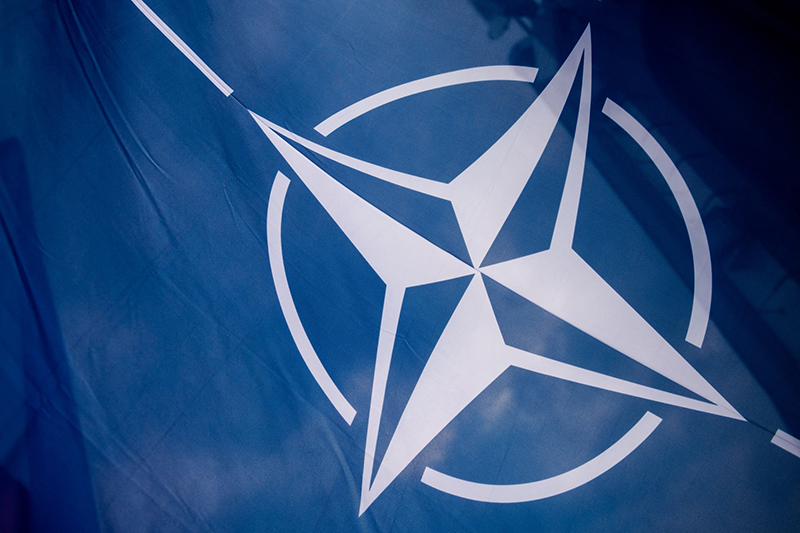In a historic move, Turkey’s parliament approved a bill on Thursday to allow Finland’s entry into NATO, paving the way for the Nordic nation’s admission to the military alliance.
Hungary had also given its support to Finland’s admission earlier this week, making it the final member state to do so. As a result, all 30 members are now backing Finland’s entry into NATO, which will effectively double the alliance’s border with Russia.
NATO Secretary General Jens Stoltenberg confirmed the news on Friday, stating that “Finland will formally join our alliance in the coming days.”

Finland’s Defense Minister, Antti Kaikkonen, expressed his excitement over the country’s admission to NATO in a tweet, stating that “Finland will be a steadfast security provider as part of the alliance. We look forward to Sweden’s membership as soon as possible.”
Currently, Russia shares around 754 miles of border with five NATO member countries, namely Norway, Latvia, Estonia, Poland, and Lithuania. However, with Finland’s 830 miles of shared border with Russia, there will soon be nearly 1,600 miles of geographic contact between NATO-protected regions and Russia. This development will significantly impact the security dynamics in the region, and its effects are likely to be felt far beyond the borders of Finland and Russia.
Apart from the implications for Russia in Northern Europe, the decision to admit Finland to NATO marks the end of the country’s decades-long policy of neutrality, according to a report by The Guardian. Once all members have ratified the accession protocol, Finland will have to deposit its “instrument of accession” at the U.S. Department of State to become an official member of the military alliance, Reuters reported.
The move will provide NATO with a more favorable geostrategic position and access to Finnish airspace, ports, and sea lanes, as well as the support of additional military forces, according to The Times. Overall, Finland’s inclusion in the alliance is likely to have significant and far-reaching implications for security in the region.
Finland’s military potential, according to reports, includes 23,000 troops, which could increase to up to 280,000 in wartime. Moreover, the Wilson Center states that Finland has “1,500 artillery weapons, including 700 Howitzer guns, 700 heavy mortar, and 100 rocket launcher systems,” which the organization argues gives Finland more artillery firepower than Poland, Germany, Norway, and Sweden combined.
The Wilson Center also argues that Finland’s inclusion into NATO would bring added technological and civilian defense infrastructure to the alliance. Retired four-star American admiral and former NATO military commander James Stavridis echoed this sentiment, calling Finland’s potential addition “a huge plus for NATO.”
Stavridis elaborated, saying that “geographically, their addition to the alliance adds a huge, difficult-to-defend border that complicates Putin’s calculus.”
The president and government of Finland announced in May 2022, following the Russian invasion of Ukraine, that it intended to apply for NATO membership. It formally handed in its application on May 18, 2022. President Sauli Niinistö said at the time of the announcement of intent, “This is a historic day. A new era begins.”
Turkey held up Finland’s admission with a veto, but Turkish dictator Recep Tayyip Erdoğan ultimately gave the Nordic nation his blessing after Helsinki agreed to crack down on groups Ankara regarded as terrorists as well as increase in defense exports.
“The Turkish parliament voted unanimously in support of Finland’s NATO membership application,” as reported.
Turkey’s approval of Finland’s NATO membership application this week comes nearly nine months after the U.S. Senate approved a treaty to include Finland and Sweden in the alliance. However, Sen. Josh Hawley (R-Mo.) was the sole holdout, stating in an opinion piece that “NATO expansion would almost certainly mean more U.S. forces in Europe for the long haul,” as reported by the New York Times. Hawley maintained that despite the Russian threat, China posed the greater immediate danger to the U.S., and recommended that “We must do less in Europe (and elsewhere) in order to prioritize China and Asia.”

Meanwhile, Sen. Tom Cotton (R-Ark.) rebutted critics who argue that the U.S. should not pledge to protect countries halfway around the world, stating that “These critics are seven decades too late. We’re already treaty-bound to defend more than two dozen nations in Europe.”
Russian President Vladimir Putin expressed his opposition to further NATO expansion in February 2022. He stated, “We haven’t seen adequate consideration of our three key requirements concerning the prevention of NATO expansion, the refusal to deploy strike weapons systems near the Russian borders as well as the return of the military infrastructure [to NATO’s 1997 borders].”
In May 2022, the Russian Foreign Ministry released a statement condemning Finland’s NATO application, saying it represents a significant shift in Finland’s foreign policy and that Russia would be forced to take retaliatory measures. Despite Moscow’s criticism of NATO expansion, Kremlin spokesman Dmitry Peskov denied any threat posed by Russia to Finland and Sweden, saying, “We do not have any dispute with these countries… They have never posed any threat to us and, logically, we did not threaten them.”
However, the Russian Embassy in Sweden recently threatened Finland and Sweden with retaliation, including military action, if they join NATO.



